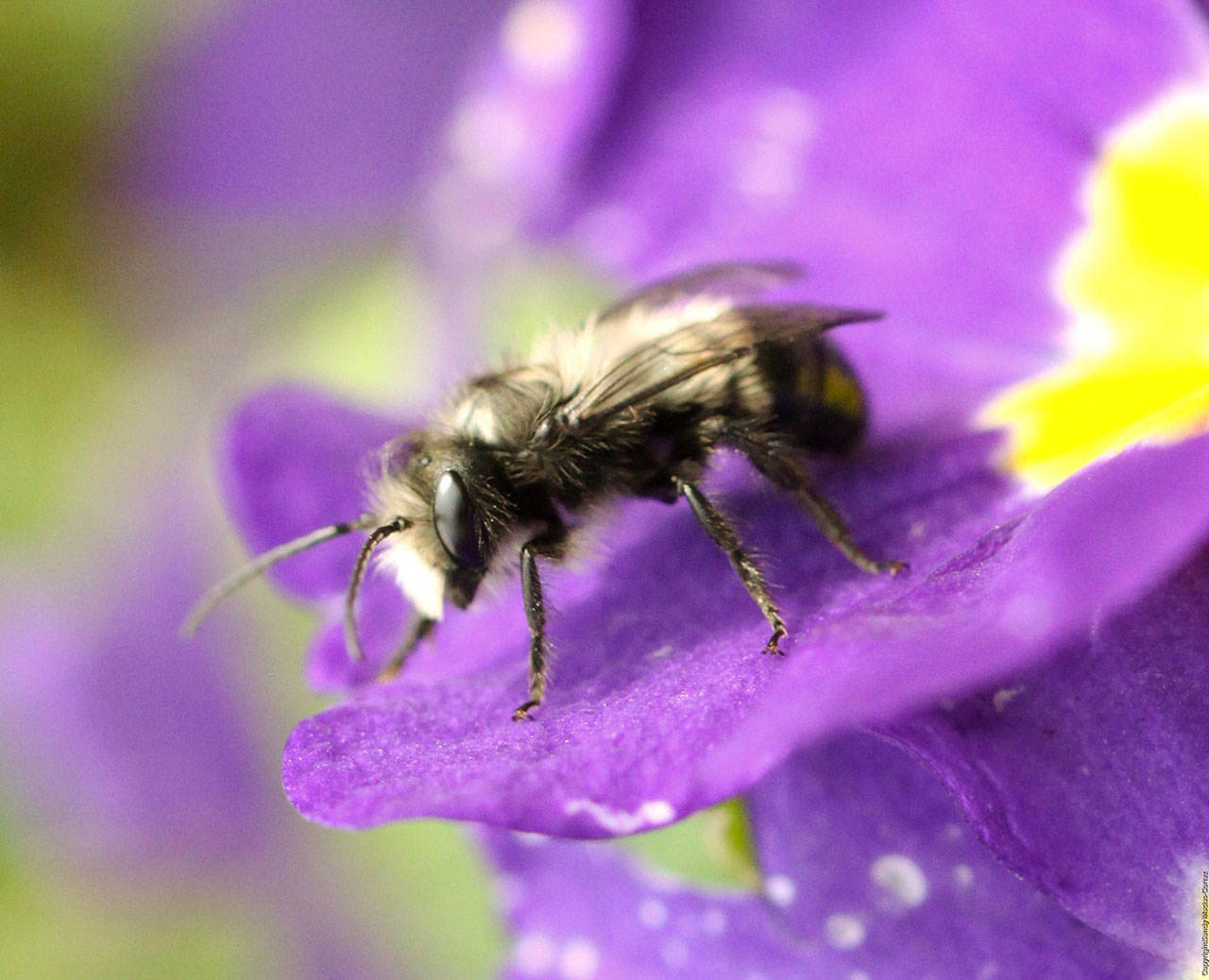Everyone knows it’s important to attract birds, butterflies, and honey bees to the garden as pollinators, but did you know you may already have another native pollinator hard at work? Introducing the orchard mason bee, or Osmia lignaria.
This month at Woodcock Demonstration Garden in Sequim the mason bee is celebrated.
Mason bees are native to Western Washington and suited to the many plant varieties growing in yards and orchards. They do not sting and are efficient, gentle and easy to accommodate. Although mason bees do not make honey, they are purportedly seven times more efficient than “honeybees” when pollinating fruit trees.
Mason bees are bluish-black and two-thirds the size of honey bees, however they can be mistaken for other species because their scopa, or body hair on legs, belly and brow may be laden with golden pollen.
They are called solitary bees because they nest in preexisting tunnels or holes, not in hives. Mason bees are gregarious and will live in a variety of nesting houses near other mason bees.
To attract and retain mason bees, all the elements they need should be nearby. They do not drill holes; instead they use decaying wood with previous insect or bird holes.
Mason bees need water and soil to create the “masonry” mud partitions between each egg laid in the nest tunnel. Hence the name, “mason” bees.
Early spring is the time to provide housing options for the mason bees. Special houses can be purchased or made out of wooden posts with 5/16” holes drilled in one side (cribbage board style).
Openings for the tunnels should have a southern exposure with a short roof extending out over the openings of the tunnels, shielding them from rain or too much sun.
When spring temperatures reach 50 degrees they will need blossoms from plants such as fruit trees, blueberry bushes, or flowering shrubs available.
First the males, smaller than the females, fly out to gather pollen to fortify themselves for mating. Three or four days later, females emerge. Males mate, live ten to fifteen days, and then die.
After mating, every female begins her work gathering pollen, nectar and laying eggs for the next generation of mason bees. Females mix a “pollen ball,” which is placed in the back of the tunnel to nourish the egg. This pollen ball is just the first step of an intricate procedure to build egg tunnels in a mason bee nest.
When the fruit is set on trees and the blossoms are gone, the females die. Life inside the nest tunnels continues. Eggs hatch, develop into larvae, then pupae, and transform into adults by September.
The adult bee will spin a cocoon and can winter-over outdoors. Some colder microclimates require sheltering nesting boxes in a garage or shed. The temperature should remain between 0 and 40 degrees.
Mason bees are the first bees to become active in spring making them very important to spring blooming crops.
Purchasing new mason bee cocoons from nurseries or other local sources is an effective way to jumpstart your pollinator population and right now is the time to do it.
For more information about hosting mason bees, check out the Washington State University website gardening.wsu.edu and search “mason bees.”
Bev Hetrick is a Clallam County Master Gardener and lovingly manages the mason bee population at the Woodcock Demonstration Garden.



